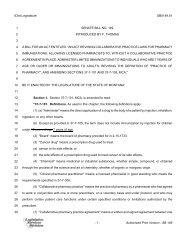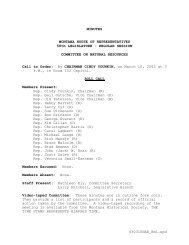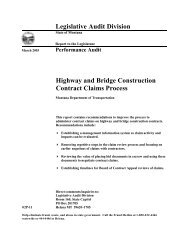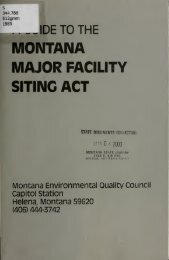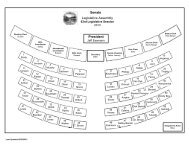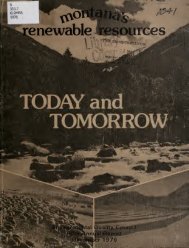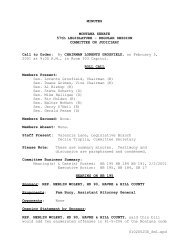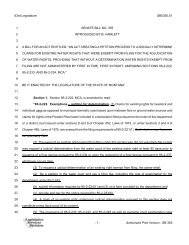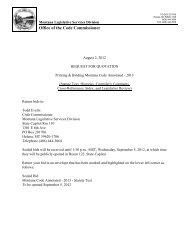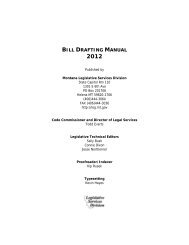Public Comment. Volume III - Montana Legislature
Public Comment. Volume III - Montana Legislature
Public Comment. Volume III - Montana Legislature
You also want an ePaper? Increase the reach of your titles
YUMPU automatically turns print PDFs into web optimized ePapers that Google loves.
Study Plan Page 2 .<br />
As a condition of granting TRRC an easement, considerable additional information must be<br />
provided. This information is outlined in the study design below.<br />
This scope of work suggests more detailed studies to determine potential acute, chronic, and sublethal<br />
effects of TRR operations on MCFH. Vibration studies pose the greatest challenge because<br />
of 1) a lack of data in the literature, 2) logistics and specialized equipment needed to simulate<br />
vibrations dn situ similar to any expected from the TRR and 3) the complexities involving<br />
behavioral studies of fish. By comparison, quantifying the effects of herbicides, incidental coal<br />
dust, water shortages, and catastrophic events are straightfornard because they draw on a more<br />
extensive body of existing data that has direct implications for fish health and survival, and<br />
involves calculations of risk assessment using established formulas.<br />
MT DF WP proposes that these studies be conducted by an independent third party, such as one<br />
or more graduate student projects through a local university or college or other researchers. The<br />
final study plan and data analysis would be performed under the supervision of one or more<br />
fisheries professors with expertise in hatchery management and mitigation requirements,<br />
fisheries professionals with comparable hatchery background, and a statistician who could<br />
evaluate the study design and aid in the data analysis. By subjecting the study design process to<br />
outside scrutiny, MT DFWP hopes to ensure that it will be statistically sound, and will provide<br />
much-needed information for other fisheries professionals.<br />
shuiia<br />
General descriptions and preliminary objectives for each aspect of the proposed studies are<br />
provided below. The final study design and scope will be developed by the independent<br />
researchers. These studies should cover impacts due to :<br />
Vibrational and sound effects,<br />
Herbicide applications,<br />
Incidental exposure to coal dust, and<br />
Derailment events and subsequent spills.<br />
Vibrational /Sound Effects.<br />
Most fish species have well developed sensory systems for detecting vibrational signals (Parker<br />
1976; Tavolga 1976). The octavolateralis system (ear and lateral line) uses mechanosensory hair<br />
cells as the transducing structure for signal detection (Popper and Carlson 1998). Some species<br />
possess ears that detect sound frequencies fiom below 50 Hz to over 2,000 Hz.<br />
Studies that determine acoustic effects on fish have focused on behavioral responses that'affect<br />
behavior and movement to help fish avoid potentially dangerous environments such as<br />
hydroelectric dams (Popper and Carlson 1998). However, there is little information on<br />
immediate and long term effects where fish are unable to escape fiom low fiequency vibrations<br />
such as those fiom a railroad (A. Popper, personal communication, 1999).<br />
-236- <strong>Volume</strong> Ill: <strong>Public</strong> <strong>Comment</strong>



